|
|
|

|
|
2010 (vol. 10)
|
|
Article 9 [2010]: Lower Devonian faunas and palynomorphs from the Dornes Syncline (Central Iberian Zone, Portugal): stratigraphical and paleogeographical
implications, by Rémy GOURVENNEC, José Manuel PIÇARRA, Yves PLUSQUELLEC, Zélia PEREIRA, José Tomás OLIVEIRA & Michel ROBARDET.-
Format [HTML] or [PDF
2,012 KB]
Reference: [CG2010_A09]
DOI: 10.4267/2042/35627
Lang.:
|
|
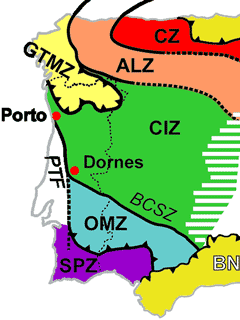 Abstract: In the Dornes syncline, southern Central Iberian Zone, Portugal, the uppermost levels of the Serra do Luação Formation up to now have been considered to be of
Pridoli-Lochkovian? age because they lie immediately under the Dornes Formation, which is of Pragian age and is well defined
stratigraphically. New paleontological elements including benthic faunas and palynomorphs allow us to confirm that the top of the Serra do Luação Formation is securely
Lochkovian, for upper Lochkovian strata are present although relatively thin. The transition from the Serra do Luação to the Dornes formations and their lithostratigraphical relationship are now clear: the terrigenous succession belongs to the Serra do Luação Formation and the limestones represent the Dornes Formation. The benthic faunas clearly have
North-Gondwanan affinities. Abstract: In the Dornes syncline, southern Central Iberian Zone, Portugal, the uppermost levels of the Serra do Luação Formation up to now have been considered to be of
Pridoli-Lochkovian? age because they lie immediately under the Dornes Formation, which is of Pragian age and is well defined
stratigraphically. New paleontological elements including benthic faunas and palynomorphs allow us to confirm that the top of the Serra do Luação Formation is securely
Lochkovian, for upper Lochkovian strata are present although relatively thin. The transition from the Serra do Luação to the Dornes formations and their lithostratigraphical relationship are now clear: the terrigenous succession belongs to the Serra do Luação Formation and the limestones represent the Dornes Formation. The benthic faunas clearly have
North-Gondwanan affinities.
|
|
Online since December 31, 2010
|
|
Article 8 [2010]: Systematics, phylogeny and homeomorphy of the Engonoceratidae Hyatt, 1900 (Ammonoidea, Cretaceous) and revision of
Engonoceras duboisi Latil, 1989, by László BUJTOR.-
Format [HTML] or [PDF
6,671 KB]
Reference: [CG2010_A08]
DOI: 10.4267/2042/35626
Lang.:
|
|
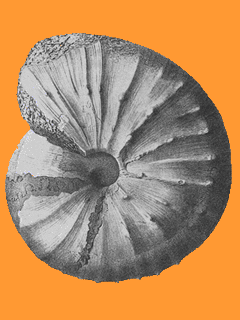 Abstract: The Engonoceratidae may well have originated on the shallow marine carbonate platforms of the southern margin of the Mediterranean Province of the Tethyan Realm during the
earliest Albian (?latest Aptian). In the entire Tethyan Realm and beyond adaptive radiation of the group was rapid and successful during the early Albian as indicated by endemic centres in the Peruvian Basin and the Western Interior Sea (USA). Later the group successfully enlarged its distribution, and invaded some provinces
(Mowry Sea, Canada) of the Boreal Realm. The mode of life of engonoceratids seems to have been
nektoplanktonic, epipelagic, and stenohaline, restricted to shallow water and platform or in some cases extremely shallow (littoral and
lagoonal) facies which may have helped their radiation. The group is distinctive and consists of nine genera and up to a hundred species, although its origin is still obscure. Their appearance may have been triggered by the oceanic anoxic event
(OAE 1b) and their rapid rise may have been helped by their shallow water mode of life and the global mid-Cretaceous warming and rise in sea level. The fall of the engonoceratids coincides with the
end-Cenomanian rapid transgression, which may have changed their shallow water habitats. Today the group is considered to have been a successful colonizer, a reliable stratigraphical indicator for shallow marine environments and a pioneer taxon for recognition of transgressive phases. Abstract: The Engonoceratidae may well have originated on the shallow marine carbonate platforms of the southern margin of the Mediterranean Province of the Tethyan Realm during the
earliest Albian (?latest Aptian). In the entire Tethyan Realm and beyond adaptive radiation of the group was rapid and successful during the early Albian as indicated by endemic centres in the Peruvian Basin and the Western Interior Sea (USA). Later the group successfully enlarged its distribution, and invaded some provinces
(Mowry Sea, Canada) of the Boreal Realm. The mode of life of engonoceratids seems to have been
nektoplanktonic, epipelagic, and stenohaline, restricted to shallow water and platform or in some cases extremely shallow (littoral and
lagoonal) facies which may have helped their radiation. The group is distinctive and consists of nine genera and up to a hundred species, although its origin is still obscure. Their appearance may have been triggered by the oceanic anoxic event
(OAE 1b) and their rapid rise may have been helped by their shallow water mode of life and the global mid-Cretaceous warming and rise in sea level. The fall of the engonoceratids coincides with the
end-Cenomanian rapid transgression, which may have changed their shallow water habitats. Today the group is considered to have been a successful colonizer, a reliable stratigraphical indicator for shallow marine environments and a pioneer taxon for recognition of transgressive phases.
Based on new material and sutural analysis, Engonoceras duboisi is revised and assigned to Parengonoceras. A set of features consisting of a simplified ceratitid suture, lanceolate and compressed oxycone shell together comprising a shallow marine ecotype is pointed out as a successful and repeated morphotype among Mesozoic
Ammonoidea, for it was repeated three times during ammonoid evolution.
|
|
Online since December 24, 2010
|
|
Letter 4 [2010]: Early large borings from a hardground of Floian-Dapingian age (Early and Middle Ordovician) in northeastern Estonia
(Baltica), by Olev VINN & Mark A. WILSON.-
Format [HTML] or [PDF
330 KB]
Reference: [CG2010_L04]
DOI: 10.4267/2042/35594
Lang.:
|
|
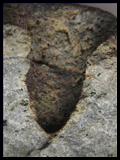 Abstract: Large plug- or slightly amphora-shaped borings have been found in the hardground marking the boundary between Early and Middle Ordovician rocks in northeastern Estonia. These borings cut large bioclasts of the trilobite
Megistaspis and cannot be assigned with certainty to any known ichnotaxon. They indicate that the diversity of early borings may have been greater than was recognized previously. Abstract: Large plug- or slightly amphora-shaped borings have been found in the hardground marking the boundary between Early and Middle Ordovician rocks in northeastern Estonia. These borings cut large bioclasts of the trilobite
Megistaspis and cannot be assigned with certainty to any known ichnotaxon. They indicate that the diversity of early borings may have been greater than was recognized previously.
|
|
Online since December 14, 2010
|
|
Letter 3 [2010]: Fossil Phoronida and their inferred ichnotaxa, by Christian C. EMIG.-
Format [HTML] or [PDF
779 KB]
Reference: [CG2010_L03]
DOI: 10.4267/2042/35531
Lang.:
|
|
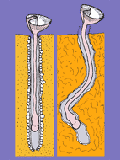 Abstract: Various ichnotaxa found in hard substrates are interpreted as
"phoronid" trace fossils. Their records are briefly reviewed. An interpretation of Diorygma found in the shells of brachiopods is not compatible with phoronid morphology and anatomy. Criteria for the discrimination of phoronid burrows and borings from those of similar organisms from others are difficult to establish even when the evidence and conclusions made therefrom are
sound. Abstract: Various ichnotaxa found in hard substrates are interpreted as
"phoronid" trace fossils. Their records are briefly reviewed. An interpretation of Diorygma found in the shells of brachiopods is not compatible with phoronid morphology and anatomy. Criteria for the discrimination of phoronid burrows and borings from those of similar organisms from others are difficult to establish even when the evidence and conclusions made therefrom are
sound.
|
|
Online since November 30, 2010
|
|
Article 7 [2010]: The evolution of ammonite associations
during the Early Oxfordian (Mariae and Cordatum zones) in the Jura area (eastern
France), by Rémi JARDAT.-
Format [HTML] or [PDF
2,174 KB]
Reference: [CG2010_A07]
DOI: 10.4267/2042/35492
Lang.:
|
|
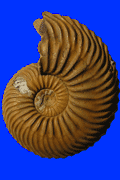 Abstract: The study of more than 40 sections in the "Creniceras renggeri
marls" of the French Jura Range (Lower Oxfordian) has found: Abstract: The study of more than 40 sections in the "Creniceras renggeri
marls" of the French Jura Range (Lower Oxfordian) has found:
- a precise biochronostratigraphic subdivison
of 16 successive populations or associations which appears to be stable over the whole geographic
area concerned;
- the correlation of these populations with the
Lower Oxfordian zones of the GFÉJ (French Research Jurassic
Group) and with those of southern England (Weymouth) and Poland (Cracow area);
- an autecologic and synecologic analysis of Oxfordian
ammonite associations in the Jura Mountains;
- an interpretation of these faunas in terms of palaeo-depth and sequence stratigraphy
units.
The main results of the study are the following:
- identification of the Costicardia Subzone;
- validation of the subdivision of the Mariae Zone established by Fortwengler and Marchand
(1994), with a woodhamense horizon above a scarburgense
horizon;
- division of the woodhamense horizon into two
units: the lower one is the woodhamense s.s. unit and the upper one
includes abundant specimens of woodhamense var. normandiana Spath;
- correlation of tectonic units on either side of the Salins
fault and of some characteristics of the ammonite populations;
- identification of five steps of changes
in depth in the Jura area which may be interpreted as sequence stratigraphic
units: a first episode
of deepening during the period bounded by the scarburgense
and praemartini horizons, an episode of stability bounded by the
beginning and the end of
the alphacordatum horizon, a slight regressive trend that lasted
throughout the
duration of the praecordatum horizon, a second episode of stability that
persisted from the Bukowskii Subzone to the Costicardia Subzone, and a third
deepening trend during the existence of the Cordatum Subzone.
|
|
Online since November 22, 2010
|
|
Article 6 [2010]: Biostratigraphic distribution of
orbitolinids in the ammonite biozones (Urgonian platform of southeastern France).
Part 1: Upper Hauterivian-lowermost Barremian, by Bernard CLAVEL, Robert BUSNARDO, Jean CHAROLLAIS, Marc André CONRAD & Bruno GRANIER.-
Format [HTML] or [PDF
34,646 KB]
Reference: [CG2010_A06]
DOI: 10.4267/2042/33369
Lang.:
|
|
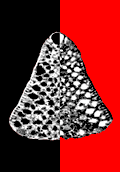 Abstract: The proposed biostratigraphic distribution of
orbitolinids from the Upper Hauterivian and the lowermost Barremian of SE
France is correlated with the ammonite biozonation. It is based on the
detailed study of eight sections which delivered orbitolinids intercalated with or
capped by levels with ammonites and, in some cases, echinids and dasycladales. Among the 24 species of orbitolinids
present during that period, 3 are restricted to the Late Hauterivian: Praedictyorbitolina busnardoi, Paleodictyoconus beckerae
and Valserina primitiva. Abstract: The proposed biostratigraphic distribution of
orbitolinids from the Upper Hauterivian and the lowermost Barremian of SE
France is correlated with the ammonite biozonation. It is based on the
detailed study of eight sections which delivered orbitolinids intercalated with or
capped by levels with ammonites and, in some cases, echinids and dasycladales. Among the 24 species of orbitolinids
present during that period, 3 are restricted to the Late Hauterivian: Praedictyorbitolina busnardoi, Paleodictyoconus beckerae
and Valserina primitiva.
|
|
Online since August 27, 2010
|
|
Article 5 [2010]: Barremian-Aptian Dasycladalean algae, new and revisited, from the Tirgan Formation in the Kopet Dagh, NE Iran, by Morteza TAHERPOUR KHALIL ABAD, Marc André CONRAD, Ali Asghar ARYAEI Aryaei & Ali Reza ASHOURI.-
Format [HTML] or [PDF
6,671 KB]
Reference: [CG2010_A05]
DOI: 10.4267/2042/33368
Lang.:
|
|
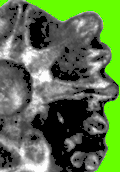 Abstract: Abundant, diversified algal assemblages comprising
more than 25 species of Dasycladales are described from Barremian-Aptian limestone deposits of the Tirgan
Formation in NE Iran. New species are described: one of them possibly belongs to a new endosporate genus, tentatively assigned the
Triploporellaceae; two others, Clypeina ? sp. 1 and Rajkaella ? sp.
1, are left in open nomenclature. The widely distributed, locally abundant Montiella ? elitzae is revisited,
because of the presence of a complete, exceptionally well preserved specimen. Yet to be demonstrated, the species is a junior synonym of Turkmenaria adducta Maslov, also
originally described from the Kopet
Dagh. Other species found in the Arkan section have already been reported from remote locations, primarily in Europe, in areas corresponding to the Northern and/or Southern Tethyan domains. Some of them are known only from the Hauterivian and/or the Barremian, excluding the Aptian, thus
dating the lower part of the Arkan section as Barremian, but not excluding the Late Hauterivian. Abstract: Abundant, diversified algal assemblages comprising
more than 25 species of Dasycladales are described from Barremian-Aptian limestone deposits of the Tirgan
Formation in NE Iran. New species are described: one of them possibly belongs to a new endosporate genus, tentatively assigned the
Triploporellaceae; two others, Clypeina ? sp. 1 and Rajkaella ? sp.
1, are left in open nomenclature. The widely distributed, locally abundant Montiella ? elitzae is revisited,
because of the presence of a complete, exceptionally well preserved specimen. Yet to be demonstrated, the species is a junior synonym of Turkmenaria adducta Maslov, also
originally described from the Kopet
Dagh. Other species found in the Arkan section have already been reported from remote locations, primarily in Europe, in areas corresponding to the Northern and/or Southern Tethyan domains. Some of them are known only from the Hauterivian and/or the Barremian, excluding the Aptian, thus
dating the lower part of the Arkan section as Barremian, but not excluding the Late Hauterivian.
|
|
Online since August 27, 2010
|
|
Article 4 [2010]: The Abiod at Ellès (Tunisia):
stratigraphies, Campanian-Maastrichtian boundary, correlation, by Francis ROBASZYNSKI & Moncef MZOUGHI.-
Format [HTML] or [PDF
5,932 KB]
Reference: [CG2010_A04]
DOI: 10.4267/2042/33367
Lang.:
|
|
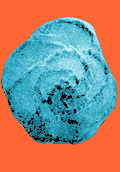 Abstract: [The Abiod Formation at Ellès (Tunisia): tripartite lithology, biohorizons based on globotruncanids and ammonites, duration, location of Campanian-Maastrichtian boundary, correlation with Kalaat Senan and the Tercis (France) stratotype] Abstract: [The Abiod Formation at Ellès (Tunisia): tripartite lithology, biohorizons based on globotruncanids and ammonites, duration, location of Campanian-Maastrichtian boundary, correlation with Kalaat Senan and the Tercis (France) stratotype]
In central Tunisia near the village of Ellès is Wadi Ed Dam.
There the Abiod Formation, underlain by the Kef marls and capped by the El Haria marls, crops out in an almost uninterrupted exposure about 286 m thick. In view of its possible use as a regional litho- and bio- stratigraphic reference section for the southern border of the Tunisian trough it is examined in detail here. Fossils studied include foraminifera (115 samples representing 6 micropaleontologic zones, see chart) and ammonites. The biohorizons established are based on the first (FO) or last occurrence (LO) of certain species of planktonic foraminifers in addition to the FO of already established foraminiferal zonal markers. Ammonite markers found include both the FO and LO of some forms, or just one or the other.
The location of the Campanian-Maastrichtian (Cp-Ma) boundary time line at Ellès is established by comparison with that determined at Kalaat-Senan and with that of the international stratotype of Tercis (France), ratified by the International Union of Geological Sciences.
At Kalaat-Senan the Cp-Ma boundary is set at the lower third of
the upper indurated limestone bar of the Abiod Formation - the Ncham Member. Its location at Kalaat-Senan is based on the upper limit of occurrence of Nostoceras (Nostoceras) hyatti and Pseudokossmaticeras brandti together with the FO of Nostoceras magdadiae, a Maastrichtian
ammonite. At Ellès several of these same markers are present, along with the respective planktonic foraminiferal zones.
The length in years of some lithologic units and paleontologic zones in the Upper Cretaceous succession of wadi Ed Dam was calculated using
cyclostratigraphy. The Abiod Formation represents 13.2 Ma, the Radotruncana calcarata
Zone 0.79 Ma, and the Nostoceras (Bostrychoceras) polyplocum
Zone 0.97 Ma. A proposed subdivision of the Upper Campanian is recommended at the base of the Bostrychoceras
Zone.
Li et alii's 1999 proposal for fixing the location of the Cp-Ma boundary at the top of a limestone bed in the El Haria marls is reviewed.
|
|
Online since August 27, 2010
|
|
Letter 2 [2010]: Hadrosaur remains in the Late Cretaceous marine sediments of Larcan (Petites Pyrenees, Haute-Garonne, France), by Michel BILOTTE, Yves LAURENT & Dominique TÉODORI.-
Format [HTML] or [PDF
1,166 KB]
Reference: [CG2010_L02]
DOI: 10.4267/2042/32428
Lang.:
|
|
 Abstract: The discovery of two hadrosaur fragments (maxilla and quadrate) in marine sediments of the end of the Cretaceous (uppermost Maastrichtian) is reported. Although this type of taphocoenosis is not exceptional for continental organisms, its situation at approximately
1 m under the iridium zone of the K/T boundary deserves to be emphasized. Abstract: The discovery of two hadrosaur fragments (maxilla and quadrate) in marine sediments of the end of the Cretaceous (uppermost Maastrichtian) is reported. Although this type of taphocoenosis is not exceptional for continental organisms, its situation at approximately
1 m under the iridium zone of the K/T boundary deserves to be emphasized.
|
|
Online since May 31, 2010
|
|
Article 3 [2010]: Bucurella,
a new genus of the Thyrsoporelleae (fossil Dasycladalean algae), by Bruno GRANIER.-
Format [HTML] or [PDF
2,462 KB]
Reference: [CG2010_A03]
DOI: 10.4267/2042/32425
Lang.:
|
|
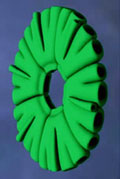 Abstract:
A new genus, Bucurella, is described and
figured; it is based on Macroporella espichelensis Deloffre et Ramalho, 1971, a taxon known only from the Late Jurassic. It is characterized by the
presence of distinctive whorls, each with three thick and broad (fertile) ramifications. The lateral division formula is 1 F:
3 F: (3x2) F: (3x2x2) F = (1: 3: 6: 12); that is the primary ramification divides into three secondaries which in turn branch
dichotomously into tertiaries and again into quaternaries. It and its descendant, Zergabriella,
are assigned to the Tribe Thyrsoporelleae. Abstract:
A new genus, Bucurella, is described and
figured; it is based on Macroporella espichelensis Deloffre et Ramalho, 1971, a taxon known only from the Late Jurassic. It is characterized by the
presence of distinctive whorls, each with three thick and broad (fertile) ramifications. The lateral division formula is 1 F:
3 F: (3x2) F: (3x2x2) F = (1: 3: 6: 12); that is the primary ramification divides into three secondaries which in turn branch
dichotomously into tertiaries and again into quaternaries. It and its descendant, Zergabriella,
are assigned to the Tribe Thyrsoporelleae.
|
|
Online since May 31, 2010
|
|
Article 2 [2010]: Traces of explosive volcanism in the Pyrenean Campanian around the Campanian-Maastrichtian boundary type section at Tercis (SW France, N Spain).
Biostratigraphy with emphasis on the foraminifer Radotruncana calcarata, by Gilles Serge ODIN.-
Format [HTML] or [PDF
6,809 KB]
Reference: [CG2010_A02]
DOI: 10.4267/2042/32424
Lang.:
|
|
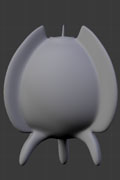 Abstract: Pyroclastic material including idiomorphic crystals of sanidine, biotite, and apatite, first identified in the type section at Tercis are contemporaneous with the Radotruncana calcarata (planktonic foraminifer) total range zone. A search was undertaken to define the palaeogeographical extent and to determine the importance of these remains of a previously unknown Campanian regional alkaline volcanic episode. A preliminary biostratigraphical search was carried out in the Tercis area and in the western Pyrenees followed by detailed micropalaeontological studies in southwestern France and northern Spain. The findings from five upper Campanian platform and flysch facies are reported in detail and deductions from three others are summarized. First, The microfaunal count of the boundary stratotype at Tercis has been increased by the use of acetolytic techniques to disaggregate indurated carbonates. So isolated tests of some key biostratigraphic markers are documented for the first time. The paucity in specimens of Radotruncana calcarata previously seen in thin sections from the type outcrop is not due to a scarcity of this particular taxon but to a general dearth of globotruncanids in the platform facies deposits of the Aturian Basin. The study shows that acetolysis multiplies the power of investigation of indurated limestones. Thus, the abundance and diversity of microproblematica discovered and studied in the stratotype section since 2006 has been confirmed and two new forms of incertae sedis are reported, one of which is called here Velafer ovatus. Today, 70 species of microproblematica are recognized at Tercis. These microproblematica allow a chronologic calibration of the deposits like or even more precise than those obtainable using ammonites or planktonic foraminifers. Sections sampled in the western Pyrenean flysch facies include the stratigraphic interval comprising the total range zone of Rd. calcarata for which we suggest here a duration of 0.80 ±0.05 Ma. No microproblematica were found in these deep detrital facies. Abstract: Pyroclastic material including idiomorphic crystals of sanidine, biotite, and apatite, first identified in the type section at Tercis are contemporaneous with the Radotruncana calcarata (planktonic foraminifer) total range zone. A search was undertaken to define the palaeogeographical extent and to determine the importance of these remains of a previously unknown Campanian regional alkaline volcanic episode. A preliminary biostratigraphical search was carried out in the Tercis area and in the western Pyrenees followed by detailed micropalaeontological studies in southwestern France and northern Spain. The findings from five upper Campanian platform and flysch facies are reported in detail and deductions from three others are summarized. First, The microfaunal count of the boundary stratotype at Tercis has been increased by the use of acetolytic techniques to disaggregate indurated carbonates. So isolated tests of some key biostratigraphic markers are documented for the first time. The paucity in specimens of Radotruncana calcarata previously seen in thin sections from the type outcrop is not due to a scarcity of this particular taxon but to a general dearth of globotruncanids in the platform facies deposits of the Aturian Basin. The study shows that acetolysis multiplies the power of investigation of indurated limestones. Thus, the abundance and diversity of microproblematica discovered and studied in the stratotype section since 2006 has been confirmed and two new forms of incertae sedis are reported, one of which is called here Velafer ovatus. Today, 70 species of microproblematica are recognized at Tercis. These microproblematica allow a chronologic calibration of the deposits like or even more precise than those obtainable using ammonites or planktonic foraminifers. Sections sampled in the western Pyrenean flysch facies include the stratigraphic interval comprising the total range zone of Rd. calcarata for which we suggest here a duration of 0.80 ±0.05 Ma. No microproblematica were found in these deep detrital facies.
All sections reaching the Campanian-Maastrichtian boundary contain a Contusotruncana (foraminifer) of which the morphology, illustrated anew from 3 discrete sections, is consistent with that of the specimens identified at this level in the Tercis type-section; they were called C. contusa or C. contusa?/C. patelliformis? These micropalaeontological studies substantiate the choice of Tercis as the best section in the world for location of the stratotype of the Campanian-Maastrichtian stage boundary; they show again its striking regional and global correlative power thanks to the unique diversity of its biological record of the late Cretaceous. In addition, it justifies the choice of a boundary level selected using the near-coincidence of a variety of key events bracketting a guide-event; 12 were clustered around the mid-level 115.2 of the type section where the GSSP of the Campanian-Maastrichtian boundary has been recognized internationally. Consequently, the selected level does not depend on a unique "magic marker" with its inherent uncertainty caused by difficulty in identification and scarcity locally and in other localities and environments. This may well be the case for the guide-ammonite Pachydiscus neubergicus as commonly used as a marker of the Campanian-Maastrichtian
boundary.
The biostratigraphical study precisely locates the pyroclastic material observed at Tercis as within the range of Rd. calcarata, immediately above the last occurrence of Tubellus hunzikeri, the first occurrences of Lucernellus aubouini and Aquilegiella varia, 3 microproblematica of which the distribution is well documented at Tercis. Previously reported evidences of volcanism at Tercis: the presence of kaolinite in the clay size fraction and of microcrystals of sanidine, biotite, zircon, apatite are supplemented here by the discovery of slightly calcic and sodic siliceous spherules with traces of magnesium, aluminum and potassium. Kaolinite and sanidine have also been found in contemporaneous levels at Peyrata, in the vicinity of the type section. Farther away in the flysch facies, the contemporaneous deposits contain pyroclastic biotite mica flakes, idiomorphic zircon crystals and, more rarely, apatite crystals of which the morphology is consistent with a volcanic origin. The presence of traces of a volcanic episode in Campanian levels representing about 1 Ma of deposition are thus confirmed but in the Pyrenees no information is available concerning the site of its origin. In fact, the explanations for the presence of the pyroclastic material involves two possibilities: either there was Campanian alkaline volcanic activity in the Pyrenees similar to that associated with subduction (which has not been identified and is not consistent with the accepted geodynamical model of the area) or the pyroclastic material comes from North America, distant some 5000 km. Such long distance transport would involve an west-east eolian conveyance of mm sized volcanic elements for 1 Ma (a hypothesis to our knowledge
undocumented).
|
|
Online since May 31, 2010
|
|
[vol.
8, no. AO7, 2008] - an extra video: Holostratigraphy of the Kahmah regional Series in Oman, Qatar, and the United Arab Emirates, by Bruno GRANIER.-
The video of Fig. 18  revisited revisited
|
|
Click on image to play the video file (flv = 5,029 KB)
|
|
Online since May 22, 2010
|
|
Article 1 [2010]: Problems in the identity of "Crioceras" barremense Kilian, 1895 (Ancyloceratida, Late Barremian), and their proposed resolution, by Didier BERT, Robert BUSNARDO, Gérard DELANOY & Stéphane BERSAC.-
Format [HTML] or [PDF
1,983 KB]
Reference: [CG2010_A01]
DOI: 10.4267/2042/32967
Lang.:
|
|
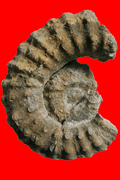 Abstract: The study of "Crioceras" barremense Kilian
was undertaken as a part of the revision of the Hemihoplitidae. This species was
considered "classic" and has been used as the index of an Upper
Barremian subzone; this usage raises a number of problems. The type specimen
from Tyrol was a fragment described and illustrated by Uhlig
as Crioceras sp. ind. aff. roemeri. This specimen could not be
retrieved, and a topotype could not be collected. Our study revealed that there
is both a biostratigraphic hiatus and important differences between conceptions
of this species: (1) that ascribed Uhlig's type
specimen (Upper Barremian, Tyrol), (2) Kilian's
concept of the specimen he found and named "Crioceras" barremense
(probably a Camereiceras from the uppermost levels of the Vandenheckei
Subzone or from the basal Sartousiana subzone of the Nauvin site, southeastern
France) and (3) current interpretations of authors, who often synonymize the
type specimen with Gassendiceras alpinum (d'Orbigny),
which occurs in the middle of the Vandenheckei Subzone. So there is a real
confusion concerning the synonymy of "Crioceras" barremense.
The age of Uhlig's type specimen is too imprecise
and its preservation too fragmentary to be reliably identifiable, because the
same morphology and ornamentation exist in several species of other genera.
Therefore, we recommend the use of the species "Crioceras" barremense Kilian
be avoided, in particular as an index, along with that of the genus Barrancyloceras Vermeulen
for which "C." barremense is used as reference. Some
species formerly assigned to this genus have been referred to the genus Gassendiceras Bert et alii.
Consequently, we also recommend the Barremense auctorum Subzone be
renamed the Alpinum Subzone (new) [index-species: Gassendiceras alpinum
(d'Orbigny)], without changing its limits as
currently defined. The lower limit of this subzone is indicated by the first
occurrence of Gassendiceras alpinum (a new biohorizon, introduced here),
a common, easily identifiable species with a well-defined stratigraphic range. Abstract: The study of "Crioceras" barremense Kilian
was undertaken as a part of the revision of the Hemihoplitidae. This species was
considered "classic" and has been used as the index of an Upper
Barremian subzone; this usage raises a number of problems. The type specimen
from Tyrol was a fragment described and illustrated by Uhlig
as Crioceras sp. ind. aff. roemeri. This specimen could not be
retrieved, and a topotype could not be collected. Our study revealed that there
is both a biostratigraphic hiatus and important differences between conceptions
of this species: (1) that ascribed Uhlig's type
specimen (Upper Barremian, Tyrol), (2) Kilian's
concept of the specimen he found and named "Crioceras" barremense
(probably a Camereiceras from the uppermost levels of the Vandenheckei
Subzone or from the basal Sartousiana subzone of the Nauvin site, southeastern
France) and (3) current interpretations of authors, who often synonymize the
type specimen with Gassendiceras alpinum (d'Orbigny),
which occurs in the middle of the Vandenheckei Subzone. So there is a real
confusion concerning the synonymy of "Crioceras" barremense.
The age of Uhlig's type specimen is too imprecise
and its preservation too fragmentary to be reliably identifiable, because the
same morphology and ornamentation exist in several species of other genera.
Therefore, we recommend the use of the species "Crioceras" barremense Kilian
be avoided, in particular as an index, along with that of the genus Barrancyloceras Vermeulen
for which "C." barremense is used as reference. Some
species formerly assigned to this genus have been referred to the genus Gassendiceras Bert et alii.
Consequently, we also recommend the Barremense auctorum Subzone be
renamed the Alpinum Subzone (new) [index-species: Gassendiceras alpinum
(d'Orbigny)], without changing its limits as
currently defined. The lower limit of this subzone is indicated by the first
occurrence of Gassendiceras alpinum (a new biohorizon, introduced here),
a common, easily identifiable species with a well-defined stratigraphic range.
|
|
Online since April 4, 2010
|
|
Letter 1 [2010]: A pterosaur from the Toarcian (Early Jurassic) of the Ardennes (north-eastern France), by Eric BUFFETAUT, Bernard GIBOUT & Danielle DROUIN.-
Format [HTML] or [PDF
735 KB]
Reference: [CG2010_L01]
DOI: 10.4267/2042/32427
Lang.:
|
|
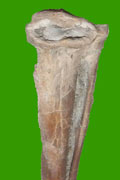 Abstract: A pterosaur tibia-fibula is described from Toarcian shales ("Marne de
Flize") near the city of Charleville-Mézières (Ardennes, northeastern France). The morphology of this element, especially the reduced fibula partially fused to the tibia, suggests that it belongs to the rhamphorhynchid Dorygnathus, which is well represented in the Toarcian Posidonienschiefer of Germany and has also been reported from the Toarcian of Nancy (eastern France). Abstract: A pterosaur tibia-fibula is described from Toarcian shales ("Marne de
Flize") near the city of Charleville-Mézières (Ardennes, northeastern France). The morphology of this element, especially the reduced fibula partially fused to the tibia, suggests that it belongs to the rhamphorhynchid Dorygnathus, which is well represented in the Toarcian Posidonienschiefer of Germany and has also been reported from the Toarcian of Nancy (eastern France).
|
|
Online since February 15, 2010
|
|
|
|